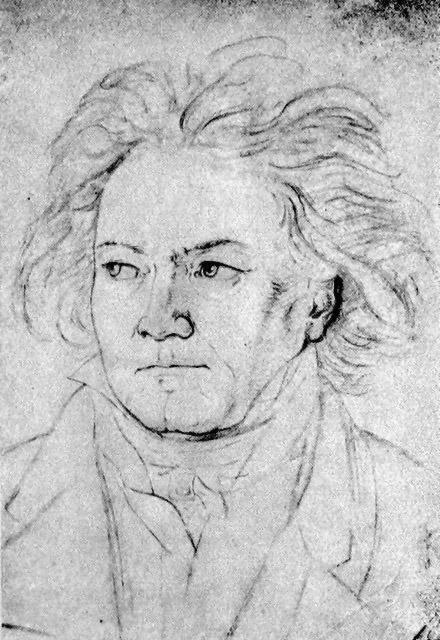Many people have observed that some sort of connection exists between music and mathematics. A harmonious musical piece can even be said to be something equivalent to a perfect mathematical construct. Compositions created by Beethoven also show a strong mathematical undercurrent. Some even believe that it might be his instinctive grasp of math that may have led Beethoven to create masterpieces despite the fact that he was deaf.
Beethoven
A standard piano octave is composed of 13 keys, with a half step separating each one of them. A major or minor scale is formed by using these 8 keys together with 5 whole step intervals and 2 half steps. One of Beethoven’s most popular compositions is the Moonlight Sonata, which perfectly explains how he used mathematical structures to essentially create music from numbers.
“The first half of measure 50 of Moonlight Sonata consists of three notes in D major, separated by intervals called thirds that skip over the next note in the scale. By stacking the first, third, and fifth notes — D, F sharp, and A — we get a harmonic pattern known as a triad… These aren’t just arbitrary magic numbers. Rather, they represent the mathematical relationship between the pitch frequencies of different notes, which form a geometric series,” according to a TED blog.

This triple stacking creates what is called “consonance,” wherein the sound frequency is perceived as melodious by our ears. By understanding Beethoven’s use of consonance and dissonance, it is possible that we might be able to unravel the mysterious link between musical creativity and math. Another legendary musician who mixed mathematics and notes was Mozart. This is best explained through his composition Musical Dice Game, which is a minuet with 16 measures.
Mozart fixed the last measure and gave two possibilities of how to play one measure. “But then he actually wrote 11 other different measures, and you’re supposed to roll two dice to decide which one to choose to play. Now, if you roll two dice, you know, and you get the number, you get two and three, so you take number five.
So now you play number five. Then you roll the dice again, it turns out to be eight. So now you play, in the next measure you play number eight, you know, and so on. There are literally hundreds of trillions of possibilities to choose from to play this,” author Mario Livio said to NPR.
Music and math
A 2012 study looked at how listening to music might affect the mathematical learning abilities of people. The study revealed that participants improved their performance in math tests by 40 percent. Performing music comes with even better benefits.
Several studies have shown that children who play musical instruments are more capable of dealing with complex mathematical problems as compared to their peers who do not play any instrument. Why does this affect our mathematical abilities so much? It has to do with the fact that it apparently activates regions of the brain that are associated with solving temporal-spatial reasoning problems.

“Certain types and frequencies of sound are processed by the two hemispheres of the brain differently, using specific music and sounds may help to stimulate one hemisphere more than the other and possibly create more balance in the brain. As such, listening to music could improve a student’s cognition and ability to learn math skills,” according to Brain Balance Centers.








